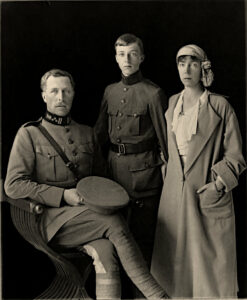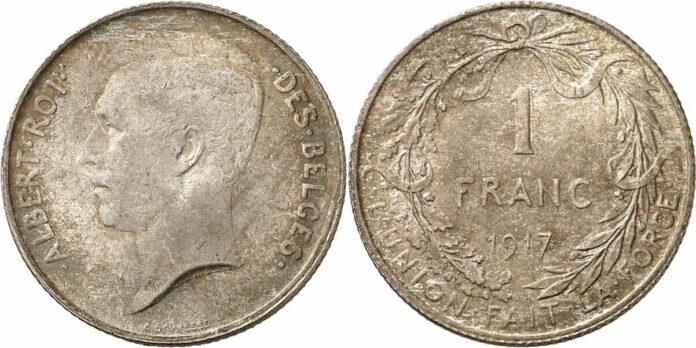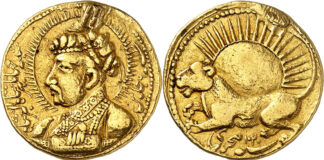These coins are a symbol of the resistance put up by the little country of Belgium against the all-powerful German army; the 1 franc pieces minted during the First World War. Not by the Royal Mint of Belgium in Brussels, but rather by the private Birmingham Mint. While the 1 franc coins with French and Flemish inscriptions from 1914 are very common, there are only a few known pieces from 1917 and 1918. There are good reasons for this, which we’ll be discussing here.

The History Behind the Coins
On 2 August 1914, the German government demanded that Belgium should allow German troops to pass through to France. On 3 August, the Belgian government rejected this request. On 4 August, the Germans crossed the Belgian border and occupied the entire country except for one small exclave. The phrase “Remember Belgium” was picked up by the media around the world, together with the “Rape of Belgium”, to characterize what was happening and what needed to be done about it. These words were so impactful that they became a slogan used by the Entente in their campaigns calling for people to volunteer or buy war bonds.
King Albert I of Belgium refused to abandon his kingdom. He took command of the Belgian Army and defended a small area of land near Ypres. In this war of attrition, the Belgian soldiers resisted the superior German army on the Yser Front.
The Belgian government, meanwhile, went into exile in Le Havre. At the last minute, the government managed to get all the country’s precious metal stocks out of the country, transporting them to London before Brussels was captured. As a result, the occupying German administration revoked the national bank’s right to issue coins and banknotes, transferring this privilege to the Sociéte générale de Belgique.
The Belgian government also insisted on its minting rights, commissioning the private Birmingham Mint to produce 1 franc pieces with the year 1914. These coins were minted in large quantities with French and Flemish inscriptions and put into circulation in both free Belgium and France. After all, Belgium was a member of the Latin Monetary Union, which meant that Belgian 1 franc coins were circulated together with French 1 franc coins, thus financing the Belgian resistance.
While civilians in occupied Belgium were enduring starvation, cruelty inflicted by their occupiers, massacres and the destruction of their towns, the Belgian government-in-exile ordered another tranche of 1 franc coins from the Birmingham Mint. The mint produced 3,910,000 pieces with Flemish inscriptions and 4,630,000 pieces with French inscriptions with the year 1917 on them and 1,099, 220 pieces with Flemish inscriptions and 370,000 pieces with French inscriptions with the year 1918. But the price of silver increased dramatically during this period, climbing from 25 pence per ounce in 1914 to 89 pence in 1920. This meant that the intrinsic value of the 1 franc coins was considerably higher than their nominal value. The result was logical: since the coins were not yet in circulation, the entire mintage was melted down.
The Birmingham Mint kept some of each of the four coins minted. Numismatica Genevensis will be offering the four different coins in its upcoming auction 17 on 15 November 2022 as part of the collection of a “distinguished gentleman”, all graded “mint state”. The museum of the Birmingham Mint sold them to Spink London in the 1970s. Spink then sold them to the “distinguished gentleman”.

All the coins depict the portrait of the popular King Albert I on the obverse, much like the Belgian 1 franc pieces from 1910 onwards. As mentioned earlier, he remained on the front line as commander-in-chief of the Belgian army until the end of the war. Meanwhile, his wife, Bavarian princess and doctor’s daughter Elisabeth, organized nursing care for the injured and boosted morale among the troops with little diversions such as card games, books, cigarettes and front-line theatre. Leopold III, the young successor to the throne, served on the Yser Front for six months – at the age of just 13 – before his parents sent him to Eton College, a boarding school in Great Britain.
The reverse of the coins depicts a wreath of oak and laurel leaves, a popular symbol in the 19th century. The laurel symbolizes victory, while the oak leaves recall the Civic Crown of the Roman emperor Augustus. This represents the state’s good relationship with its citizens. In the center of the wreath is the denomination, the value and the year. Below the wreath is the Belgian national motto: “L’union fait la force” or “Eendracht maakt macht” – translating as “unity is strength”.
And indeed, the Belgian troops managed to hold the Yser Front until Germany was defeated in 1918. This was not the only reason why the Belgians were invited to the Paris Peace Conference. Even though the country was only able to push through very few demands in the Treaty of Versailles, it is still remarkable that, even at this point, Albert I was already speaking out against imposing excessively harsh peace terms, specifically to avoid provoking any thoughts of revenge among the German people. He also pointed out that immediately dissolving the Habsburg Empire would create instability in the Balkans. And although Belgium was entitled to 8% of German reparations, it was this nation, which had suffered so greatly, that negotiated a compromise in 1921 that dialed back the reparations demanded in the Treaty of Versailles to a more realistic level.
The presented coins can be found in the auction catalog of Numismatica Genevensis.
For more information, visit the auction house’s website.
Do you know the Belgian Belgas? If not, read this article.








